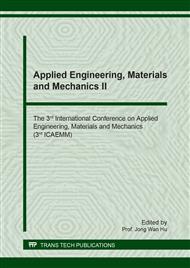p.118
p.123
p.128
p.133
p.138
p.145
p.152
p.157
p.162
The Optical Properties of Nano-Materials and Electromagnetic Wave Propagation Visualized with MATLAB
Abstract:
The course of electromagnetic fields and waves has properties of abstract concept, strong theory and complex calculation, thus this course is difficult to study and understand, and then is also difficult to teach. In order to make the understanding of the course easier, MATLAB software is used as a platform in classroom teaching of electromagnetic fields and waves. This paper mainly discusses the electrical field intensity distribution of media sphere materials and the properties of electromagnetic wave propagation with MATLAB software. The optical properties of dielectric-metal core-shell multi-layered nano-shell are also studied with Laplace's equation. To enrich the teaching content and improve a better teaching effect, the optical property of nano-materials and electromagnetic wave propagation are visualized with MATLAB software, which makes the properties of nano-materials and electromagnetic wave propagation understand easily.
Info:
Periodical:
Pages:
138-144
Citation:
Online since:
July 2018
Authors:
Price:
Сopyright:
© 2018 Trans Tech Publications Ltd. All Rights Reserved
Share:
Citation:


